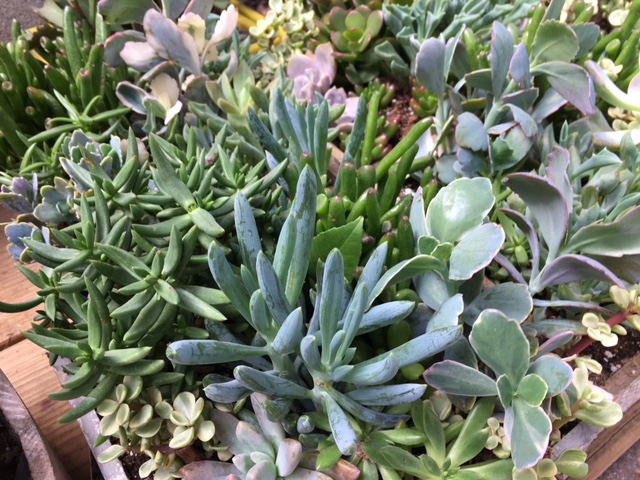
Whenever I see lawn grass start to go dormant in the summer I remember a guy I once met in a Chicago suburb who had replaced his front lawn with a carpet of prickly pear cactus. It kept kids and dogs out of his yard, he said, and he didn’t have to water it.
Doing without water is what cacti and succulents do best. Succulents (the general term; cacti are a subcategory) evolved in dry places, with tough skins to protect their fleshy, water-filled stems and other mechanisms to hoard every molecule of water so they can go months without rain.
That self-sufficiency is part of the reason succulents have become popular as houseplants in the last few years. People who never remember to water houseplants—or are afraid they might not remember to water plants—feel they can handle a jade plant or an echeveria.
The stiff, sculptural forms of many cacti and succulents, with their spirals, spines, and smooth knobs, are another attraction. Garden centers and florists have learned to sell varieties with a range of shapes and colors to invite combinations.
Succulents need full sun, but they can thrive in a sunny window or in a conservatory. In fact, species from hot places will need a house or a greenhouse to make it through a Midwestern winter. That can be tricky, though, because many of the other plants that we keep in greenhouses—think orchids—need much more humidity than a desert cactus can tolerate. The best large succulent collections I’ve seen had a conservatory to themselves, with nice dry air.
Not all succulents are such delicate flowers (although many do bloom, if they’re happy with their living conditions). That prickly pear cactus (Opuntia humifusa) is native in many parts of the Midwest, from Texas halfway up Michigan. It only lives in sandy, rocky places where water drains quickly away from its roots, so it doesn’t mind summer rainstorms. There’s also a yucca species (Yucca filamentosa) that is native to the sandy Indiana Dunes along the Lake Michigan shoreline. Many Chicago-area gardens include oddly cuddly succulents in the Sempervivum genus that we call hens-and-chicks. All these plants make it through Chicago winters just fine.
The key to making a collection of succulents is not to assume they’re all the same. Although they all come from dry places with rocky or sandy, well-drained soil, they’re not all from the same climate. As with any plant, learning a bit about them and their origins makes it easier to give them what they need.


